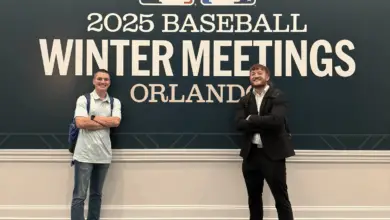
Cubs Organizational Breakdown, Pt 9 – Relievers Close It Out
We’ve looked at every other position over the course of this series, but we’ll close it out with the one I think will bear the most fruit in Chicago this year: relief pitching. With Rob Zastryzny, Felix Pena, and Jose Rosario on the doorstep, the Cubs will not have to go out looking for a reliever for quite some time. Even so, there are other prospects who are in play to help the bullpen this year, including Pierce Johnson, Corey Black, Ryan McNeil, and maybe even Duane Underwood.
Last year, the bullpen at AAA Iowa was the strength of that team. The same will be true this year. That is good news as it shows the depth of the system. Heck, the Cubs actually traded away one of their up-and-coming relievers, James Farris, because of the depth in the minors.
While bats have always grabbed the headlines, the Cubs have made a practice of drafting lots of arms. They selected 27 pitchers, 16 of which actually signed. Most of them will be in South Bend this year, but a couple could make their way to Tennessee and maybe even Iowa over the course of the summer. Yes, they could be that good.
Jason McLeod’s strategy to this point has been to throw a lot of draft picks into the bullpen. Not all started there, but they seem to thrive as relievers in the minor leagues. Today’s post will rank five of the top bullpen prospects in the Cubs minor-league system, three of whom are lefties and only two of whom are closers.
Honorable mention
There are several bullpen arms from last year’s draft that will get their first chance in full-season ball this year. They include Dakota Mekkes, Marc Huberman, Michael Rucker, Chad Hockin, and Duncan Robinson. My pick to click this year is Hockin, a righty out of Cal State Fullerton. Throwing in the mid-90’s, Hockin has closer type stuff and closer experience and could really benefit from professional coaching.
Top five to watch this year
5. Marc Huberman – A lefty out of USC, Huberman pitched at Eugene last year and had a 1.72 ERA over 15 innings in a setup role. As I watched him pitch a few times, hitters struggled to find the ball coming out of his hand. It’s not that Huberman was trying to be highly deceptive, he just hides the ball naturally. I think he might not be around South Bend very long.
4. Kyle Twomey – Originally slated to be a starter, it didn’t necessarily work out that way for Twomey. After a couple of minor injuries, the lefty seemed to blossom in a relief role. I saw him a couple of times live in 2016 and his curveball devastated hitters in the Midwest League. He had an ERA of under 1.00 out of the pen in the second half, striking out 14.5 batters per 9 innings. Opponents only batted .196 against him in that span.
3. Wyatt Short – This lefty surprised everyone at Eugene last summer when he dominated the Northwest League as the Emeralds’ closer. Pretty simply, he did not give up a run in 2016. He was efficient, to the point, and devastating out of the pen. Short should begin this year at South Bend and, like Huberman, could advance quickly in 2017.
2. Steve Perakslis – He’s always had mid-90’s heat, and he’s always been a second-half player. I don’t know what it is about him that he seems to struggle the first half of the year and then turns it on once July hits. Perakslis got some action as a starter for Iowa and Tennessee last year and seemed to thrive. That said, I don’t expect him to return to that role in 2017. Instead, he will likely return to the bullpen, where he’ll be better because of his experience as a starter.
1. Jose Rosario – He was off of most people’s radar after undergoing Tommy John surgery and missing all of 2015, but that was as a starter. Now that he’s in the pen, his velocity has increased to the mid to upper 90’s and he’s set himself up as a prospect who could actually make the 25-man roster. I doubt that happens, but he could become the first to be called up to Chicago this spring or summer.
What I like most about this collection of arms is that they offer such a great mixture. They all have different arsenals and velocities, not to mention handedness. And though they’re no cookie-cutter said, they could well be serving Cubs fans some cookies before long.
Check out the rest of the positional breakdowns below:


